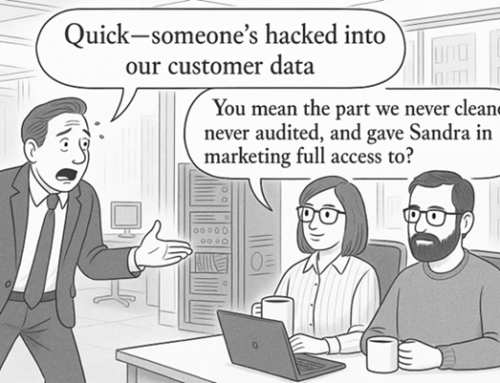How alumni teams at higher education institutions can enhance relationships with past students and increase lifetime value
Digital transformation scores a B+
According to a study by McKinsey, almost 80 percent of organisations reported that during the pandemic they initiated a process of digital and data transformation. Undeniably, COVID 19 fast tracked many organisations’ transformation intentions. For instance, the higher education sector – not one famed for its agility – had been toying with the concept of Responsive Blended Learning, a hybrid of traditional classroom based delivery and online learning for years, but it took lockdown for this to actually become a reality. Most institutions went from face-to-face teaching to digital delivery in a matter of days. And with exam period looming; decisions about online assessment had to be made very quickly too.
Data Transformation scores a C-
So, whilst higher education institutions navigated the digital transformational requirements brought on by the pandemic pretty well, when it comes to data transformation, the picture isn’t quite so positive. The data maturity framework which comprises five stages of progress in data maturity for organisations (Unaware, Emerging, Learning, Developing and Mastering) plots most universities within the emerging and learning categories. Whilst there is an appetite to use data more efficiently, there is still a way to go. However, the good news for universities as they progress along the data maturity journey, there are pragmatic solutions that can easily be applied help to make their data practice more effective and transition further along the continuum.
Alumni engagement
Such solutions can be explained using the alumni database as an example. This is one of a university’s most valuable assets since it contains people who are emotionally invested in the university – predominantly positively. Building and nurturing a relationship with past students is important for a number of reasons:
- You can keep them informed of the institution’s achievements and make them part of its future
- It inspires financial support – last year Harvard raised $1.4 billion from donations from its alumni network
- It creates a community of global connections for past students to engage and network with
- It develops brand ambassadors that will promote the institution on your behalf
- It becomes a great business development channel – as the past students progress their career you can leverage their lifetime value by offering career development or upskilling support and even build partnerships and research opportunities including KTPs with their places of work
- It can aid recruitment
Keeping it clean!
Clearly, there are huge benefits in alumni engagement. However, to succeed there is one key principle that must be adhered to – or it will undermine any activity. It is vital that the database is kept up to date. If it isn’t you risk alienating this engaged audience with irrelevant communications – or worse, risk losing track of them completely.
For instance, did you know that recent graduates move house more than any other demographic, this is because they tend to be in rented accommodation, and it is easier to move when a tenancy agreement comes to an end. A new trend that has been identified amongst graduates is taking out quarterly rolling agreements on Airbnb and moving on whenever a better accommodation option comes along or if they change jobs/relocate. This more transient lifestyle lasts until they get on the property ladder. Research shows that once someone buys their propensity to move diminishes with the average homeowners moving on average 3.6 times over their lifetime. The issue that many universities will have is that only a minority of movers will proactively inform the alumni office that they have moved or got a new email address. As a result, a university’s recent alumni data (new graduates) will very quickly degrade and become out of date meaning that it is difficult to get an accurate picture of the network at any one point resulting in flawed decision making. It also results in poor targeting of direct mail (one of the most effective forms of fundraising) leading to both wasted marketing spend, not to mention the potential of missed donation opportunities.
The solution
There are several solutions on the market that help universities keep their data up to date. These are known as suppression products, which typically fall into two main categories: Goneaway suppression and deceased suppression. Goneaway suppression products enable organisations to quickly identify people within a database that have moved house. It can trace the new address details of these individuals so that the relationship can be re-established. Deceased suppression products, as the name suggests, helps universities to identify any of the alumni network that have passed away. This is very important as sending communications to people that have died can cause much distress to their bereaved relatives. Again, it is unlikely that a deceased person’s loved ones will think to inform a university of their loss at an already very difficult time. Whilst no-one would proactively wish to cause upset to a grieving family, it unfortunately happens very frequently, hence why keeping a database up-to-date becomes an ethical responsibility as well as a commercial one.
The process
The process of keeping a database up to date is known as data hygiene, as it is recommended by the ICO and trade associations such as the Data & Marketing Association (DMA) that institutions clean their data at a minimum once a quarter. Although before any campaign activity is the optimum. Doing so, is not an onerous process there are different solutions available. For example, if the database is held in a CRM system such as Microsoft Dynamics 365 it is possible to use an app to screen the data and identify any goneaways or deceased records. Alternatively, there are API solutions enabling secure cleansing in the cloud or if the data is held on a server, it can be cleaned via desktop software. And the best news is that it will pay for itself in terms of the savings made in wasted marketing effort and the increase of donations from more relevant targeting. Win-win!





